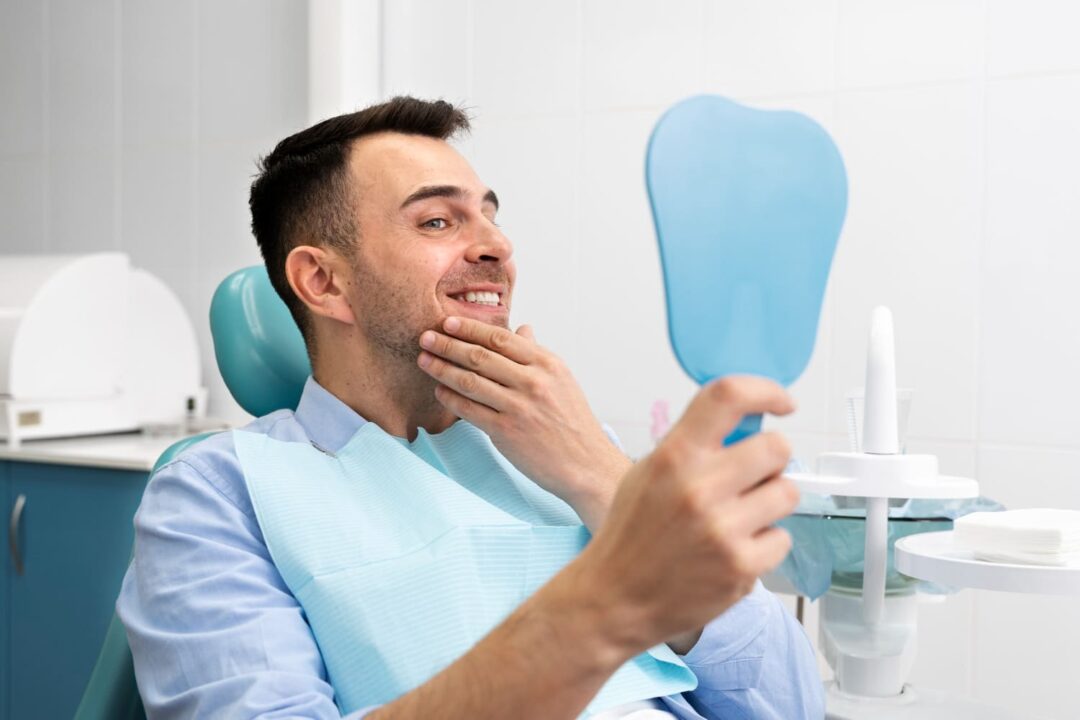Understanding Periodontal Disease
Periodontal diseases, or gum diseases, are primarily infections of the structures around the teeth. These structures include the gums, periodontal ligament, and alveolar bone. The condition can range from mild gum inflammation to severe damage that could lead to tooth loss if not treated appropriately. If left untreated, these conditions can escalate, necessitating intervention from a qualified periodontist to manage and correct the situation. Periodontal diseases often progress unnoticed because they do not cause pain. This is why being aware of and educated about the early indicators is crucial. Keeping current on the reasons, signs, and treatment choices can assist in effectively controlling the condition, ensuring proper oral health, and avoiding tooth loss.
Common Signs and Symptoms
Identifying the initial indicators of gum disease is crucial for prompt intervention. Initial signs could involve inflamed or reddened gums, frequently accompanied by bleeding while brushing or flossing. Chronic halitosis is another common sign, with gums seeming to recede from the teeth. During later phases, the illness may result in teeth becoming loose or moving, alterations in your bite alignment, and pus between teeth and gums.
If you observe any of these signs, it is essential to see a dentist promptly. Detecting issues early can result in more successful therapies and improved results. Do not delay until the condition progresses; taking proactive measures at the initial indication of trouble can preserve your teeth and avoid other associated health problems.
Prevention and Early Intervention
Preventing periodontal disease involves conscientious oral hygiene practices. Brushing at least twice a day for two minutes helps remove food particles and plaque from teeth surfaces. Daily flossing is equally important to remove debris and plaque between the teeth and under the gum line, which a toothbrush can’t reach. Using an antimicrobial mouthwash can also reduce oral bacteria and plaque.
Regular dental examinations and cleanings are necessary to prevent issues. In these appointments, a dentist can detect and treat early signs of gum disease, conduct professional cleanings to remove plaque and tartar, and advise on good oral hygiene practices. Regular dental appointments are essential for early intervention, involving nonsurgical treatments to reverse symptoms and halt further damage.
Treatment Options for Periodontal Disease
The treatment of periodontal disease changes based on its severity. Nonsurgical treatments may be adequate for less serious cases. Scaling and root planning require careful elimination of plaque and tartar from both the surface and underneath the gum line, followed by smoothing of tooth roots to help gums reattach to teeth. Furthermore, infection can be managed by prescribing antibiotics or antimicrobial mouth rinses.
For more advanced cases, surgical interventions might be necessary. These can include flap surgery, where the gums are lifted back to remove tartar and then stitched back into place for a tighter fit around the teeth. Another surgical option is bone grafting, which replaces bone destroyed by periodontal disease and serves as a foundation for new bone growth. Tissue grafts might also be required to reinforce thin or receding gums. Advanced care through these methods can help restore oral health and functionality.
Advancements in Periodontal Treatments
Thanks to advancements in dental technology, less invasive treatments are now being developed for periodontal disease. Laser therapy is gaining popularity for its minimally invasive nature, precise targeting and removal of inflamed gum tissue, and quicker recovery with reduced pain in comparison to conventional surgical techniques. This innovative method increases the availability and comfort of periodontal care for patients.
Additionally, integrating antibiotics and antimicrobial treatments into periodontal care has shown promising results. These therapies help control and eliminate bacterial infection, enhancing the overall effectiveness of both surgical and nonsurgical treatments. By leveraging these innovations, dental professionals can offer more comprehensive and efficient care tailored to each patient’s needs.
Innovative Periodontal Treatments
Laser therapy, for example, is an emerging treatment option that minimizes discomfort and accelerates healing compared to traditional methods. This procedure targets diseased tissue and bacteria by utilizing focused laser light, preserving healthy tissue and reducing the need for more invasive surgical techniques. Patients benefit from less bleeding during and after the procedure, minimal discomfort, and a significantly shorter recovery period.
Another innovation in periodontal treatment involves using antibiotic gels or mouth rinses that are applied directly to the gums. These products help control bacterial infection and inflammation, enhancing the overall effectiveness of periodontal treatment. By incorporating these advanced treatments into their practice, periodontists can provide more comprehensive care that addresses the root causes of periodontal disease and promotes long-term oral health.
Benefits of Professional Periodontal Care
Seeking professional periodontal treatment significantly enhances oral health and overall well-being. It addresses current issues and educates patients on maintaining healthy practices to prevent future problems. Professionals provide personalized advice on brushing, flossing, and oral care products while monitoring progress through regular check-ups. This proactive method helps identify and handle potential problems early on, decreasing the chances of losing teeth and facing complications from severe gum disease. For more information, the WebMD provides a detailed overview of periodontal diseases and their treatments.
Maintaining Long-Term Oral Health
After receiving periodontal treatment, continuing with routine dental appointments and following the recommended oral care regimen, including daily brushing and flossing, antimicrobial mouthwash, and monitoring sugar and acidic food consumption, is essential. Keeping up to date with developments in periodontal treatments and quickly dealing with persistent symptoms is necessary. Developing a strong bond with your dentist and following their guidance will ensure good oral health, prevent potential problems, and keep your smile bright and healthy.
The Importance of Comprehensive Dental it’s
A holistic approach to dental care integrates various treatments for optimal oral health, addressing both immediate issues and long-term prevention. This comprehensive care may include periodontal therapy, orthodontics for misaligned teeth, and restorative procedures for damaged teeth. By proactively managing all aspects of oral health, patients can achieve a healthier, more attractive smile and improve overall well-being, as oral health is linked to systemic conditions. Investing in dental care today can lead to lasting benefits and enhanced confidence.




